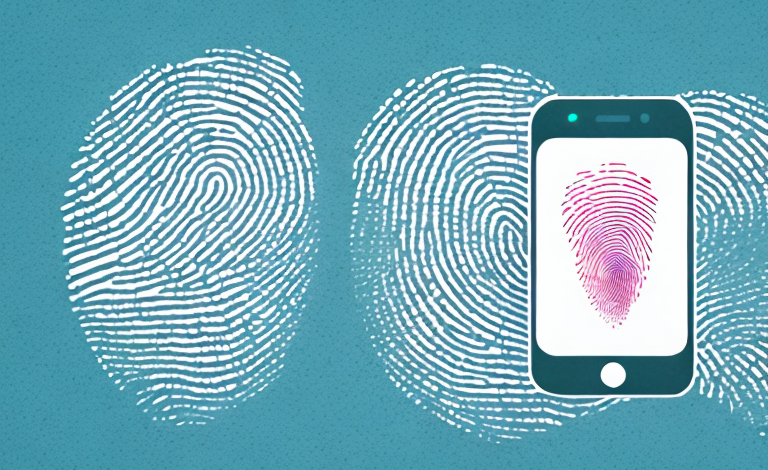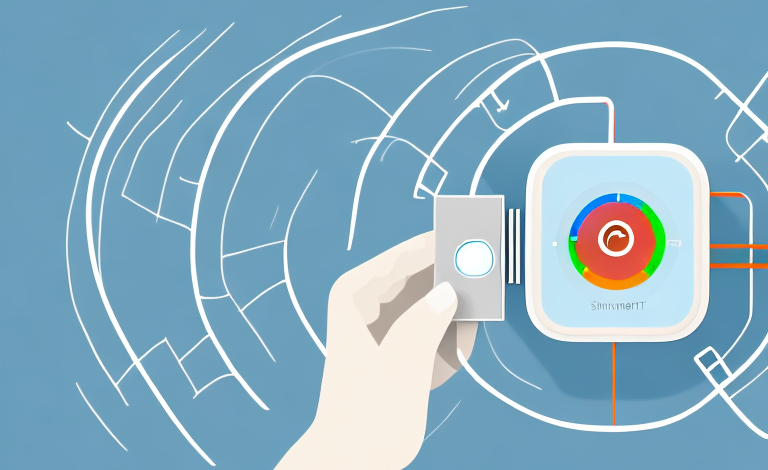Biometric authentication has revolutionized the way we secure our personal devices and accounts. With the advent of various biometric authentication methods such as fingerprints, facial recognition, and retina scanning, it has become easier to secure our digital assets. However, the question remains: can fingerprint biometrics be beaten? In this article, we will explore the vulnerabilities of this popular method of authentication and assess its potential for being breached.
Exploring the vulnerabilities of fingerprint biometrics
Fingerprint biometrics is one of the most widely used methods of biometric authentication. It works by reading the unique patterns of ridges and valleys on a person’s fingerprints. However, the technology behind fingerprint scanners is not foolproof. One of the main vulnerabilities of this method is that it can be deceived using fake fingerprints. Attackers can use molds or gels to create fingerprints that mimic those of the authorized person. These fake fingerprints can then be used to bypass the authentication system and gain illicit access to secured devices or accounts.
Another vulnerability of fingerprint biometrics is that it can be affected by environmental factors. For example, if a person’s fingers are wet or dirty, the scanner may not be able to read their fingerprints accurately. This can lead to false rejections, where the system denies access to an authorized user, or false acceptances, where it grants access to an unauthorized user.
Furthermore, fingerprint biometrics can also be subject to privacy concerns. In some cases, the collection and storage of biometric data can be seen as an invasion of privacy. Additionally, if a database of biometric information is compromised, it can lead to serious security breaches and identity theft. Therefore, it is important for organizations to implement strong security measures to protect biometric data and ensure the privacy of their users.
How secure are fingerprint scanners?
Despite the vulnerability to fake fingerprints, fingerprint scanners are still considered highly secure. This is because creating a fake fingerprint requires a significant amount of technical expertise, specialized equipment, and access to the authorized person’s fingerprints. While this is not a foolproof method of authentication, it does make it more difficult for attackers to breach the system.
However, it is important to note that not all fingerprint scanners are created equal. Some scanners may have weaker algorithms or sensors, making them more susceptible to spoofing attacks. It is important to choose a reputable brand and model with strong security features to ensure maximum protection.
Additionally, it is important to consider the potential privacy concerns with the use of fingerprint scanners. Biometric data, such as fingerprints, is highly personal and sensitive information. It is important for companies and organizations to have strict policies in place for the collection, storage, and use of this data to prevent any misuse or unauthorized access.
The limitations of fingerprint biometrics
Another limitation of fingerprint biometrics is that they are not suitable for all situations. For example, people who work in industries where their hands are subjected to frequent damage or changes in their fingerprints, like construction workers, may not be able to rely on this method of authentication. Also, people who have similar fingerprints, such as identical twins, may experience difficulties gaining access to accounts or devices that use fingerprint authentication.
In addition, fingerprint biometrics can also be vulnerable to spoofing or hacking. It is possible for someone to create a fake fingerprint or use a stolen fingerprint to gain access to a device or account. This is why it is important to use multi-factor authentication, such as combining fingerprint biometrics with a password or PIN, to increase security.
The history and evolution of fingerprint scanning technology
The use of fingerprints for identification purposes dates back to ancient Babylon over 2,000 years ago. In modern times, the use of fingerprints as a method of biometric authentication began in the late 19th century, with the classification system developed by Sir Francis Galton. Since then, fingerprint scanning technology has evolved significantly with the invention of more advanced and sophisticated tools and equipment for capturing and analyzing fingerprints.
One of the major advancements in fingerprint scanning technology was the development of automated fingerprint identification systems (AFIS) in the 1980s. AFIS allowed for the rapid and accurate identification of individuals by comparing their fingerprints to a database of known prints. This technology revolutionized law enforcement and forensic investigations, making it easier to solve crimes and identify suspects.
How to improve the security of fingerprint biometrics
There are various ways in which the security of fingerprint biometrics can be improved. One of the most important is to regularly update the software used to analyze fingerprints. This ensures that any known vulnerabilities or weaknesses are addressed, reducing the chances of attacks. Also, encouraging users to regularly clean their fingerprints before scanning can help to eliminate any extraneous material or dirt that could affect the accuracy of the reading.
Another way to improve the security of fingerprint biometrics is to implement multi-factor authentication. This means requiring users to provide additional forms of identification, such as a password or a security token, in addition to their fingerprint. This adds an extra layer of security and makes it more difficult for unauthorized individuals to gain access.
It is also important to properly train and educate users on the proper use and handling of fingerprint biometric systems. This includes teaching them how to properly scan their fingerprints, how to securely store their biometric data, and how to recognize and report any suspicious activity. By promoting a culture of security awareness, organizations can help to prevent security breaches and protect sensitive information.
Comparing fingerprint biometrics to other forms of biometric authentication
While fingerprint biometrics is widely used, it is not the only method of biometric authentication. Other methods such as facial recognition and retina scanning are gaining ground due to their accuracy and convenience. These methods offer less opportunity for attackers to tamper with the system, but they may not be suitable for all situations, such as those where face masks or eye injuries may impair recognition.
Another form of biometric authentication that is gaining popularity is voice recognition. This method uses unique vocal characteristics to verify a person’s identity. It is convenient and can be used in situations where other biometric methods may not be feasible. However, it may not be as accurate as other methods and can be affected by factors such as background noise or changes in a person’s voice due to illness or injury.
The future of fingerprint scanning technology and its potential impact on security
Fingerprint scanning technology is likely to continue evolving in the coming years, with the development of more sophisticated tools and equipment for scanning and analyzing fingerprints. This could lead to improved security measures that make it more difficult for attackers to breach the system. However, increased reliance on fingerprint biometrics also raises concerns about the potential impact of these tools on privacy.
One potential application of fingerprint scanning technology is in the field of healthcare. By using fingerprints to identify patients, healthcare providers can ensure that patients receive the correct treatment and medication. This could help to reduce medical errors and improve patient outcomes. However, there are also concerns about the security of patient data, and the potential for this information to be misused or accessed by unauthorized individuals.
Debunking common myths about fingerprint biometrics
There are several myths and misconceptions about fingerprint biometrics, such as the idea that everyone has a unique fingerprint. In reality, some people have similar fingerprints, and identical twins can have identical fingerprints. It is also not true that fingerprints never change over time. Injuries, medical conditions, and even age can cause changes in the patterns on a person’s fingerprints.
Another common myth about fingerprint biometrics is that it is foolproof and cannot be hacked. While it is true that fingerprint biometrics is a highly secure method of authentication, it is not completely immune to hacking. Hackers can use various techniques such as creating fake fingerprints or using high-resolution images of fingerprints to bypass the system.
Despite these myths and misconceptions, fingerprint biometrics remains one of the most reliable and widely used methods of authentication. It is used in various industries such as law enforcement, healthcare, and finance to ensure secure access to sensitive information and facilities. As technology continues to advance, fingerprint biometrics is also evolving to become even more secure and accurate.
The ethical implications of using fingerprint biometrics for authentication
The use of biometric authentication methods such as fingerprint scanning raises important ethical concerns. For one, there are concerns about the collection and storage of biometric data, and the potential misuse of this data by unauthorized third parties. There are also concerns about the potential for abuse of this technology to violate individual privacy and human rights.
Case studies: notable instances where fingerprint biometrics have been successfully breached
There have been several high-profile cases of fingerprint biometrics being breached, such as the case of using a photo of a fingerprint to create a fake fingerprint that can be used to bypass the authentication process. Another example involves the use of gelatin to create a fake fingerprint, which was used to gain access to a high-security system. These cases highlight the importance of improving the security of fingerprint biometrics to prevent such breaches.
Best practices for using and implementing fingerprint scanning technology
To ensure the security of fingerprint biometrics, it is important to follow best practices for using and implementing this technology. This includes regularly updating the software used to analyze fingerprints, encouraging users to maintain clean fingers, limiting access to these data, and keeping data storage secure. Following these best practices helps to minimize the risk of breaches and improve the security of fingerprint biometrics.
The role of AI in enhancing the security of fingerprint biometrics
Artificial intelligence (AI) has been used to enhance the accuracy and security of fingerprint biometrics. For example, AI algorithms can be used to detect and prevent fake fingerprints from being used. AI can also be used to analyze large databases of fingerprints to identify patterns and anomalies that might not be apparent to the human eye, thereby increasing the accuracy of the system.
Balancing convenience and security: exploring alternatives to fingerprint biometrics
While fingerprint biometrics are convenient, alternative methods of biometric authentication may be better suited for certain situations. For example, facial recognition can be used in situations where hands-free authentication is needed. Iris scanning may be used in situations where eye identification is preferred. As technology continues to evolve, the options for biometric authentication will continue to grow, and it will be up to organizations to balance convenience with security.
What’s next for the field of biometric authentication?
Biometric authentication is likely to continue evolving in the coming years, with the development of new and more advanced methods of biometric identification. The future of biometric authentication may involve the use of multiple biometric modalities, such as combining fingerprint scanning with facial recognition. The importance of balancing convenience with security will continue to be a key factor in the development of new biometric authentication systems.
In conclusion, while fingerprint biometrics are not a foolproof method of authentication, they still provide a high degree of security when used properly. With the right best practices in place, they can be an effective way to protect personal assets and sensitive information. However, it is important to remain vigilant and adopt other methods of biometric authentication when necessary to ensure the utmost level of security.



